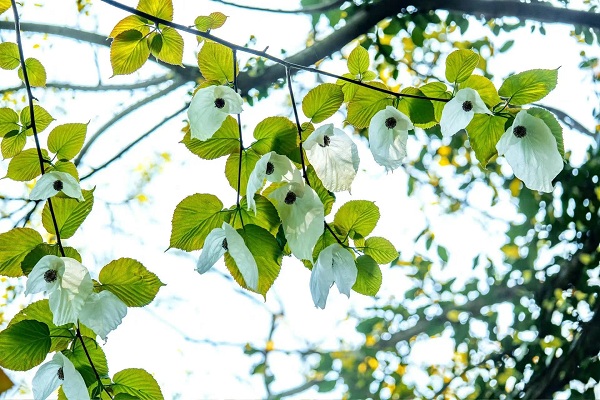Tianma Mountain, located in the Sheshan National Tourist Resort in East China's Shanghai, recently welcomed a very special sight – the blooming of dove trees.

These unique trees, scientifically known as Davidia involucrata, have garnered attention due to their striking resemblance to white doves in flight when in full bloom. [Photo/WeChat account: sheshanlvyou]
Originating from China, these trees have captured the fascination of botanists worldwide, earning them the moniker the Chinese Dove Tree. Considered a botanical marvel akin to the giant panda, they hold significant value in both the ornamental and ecological realms.
Legend has it that Wang Zhaojun, the famed ancient Chinese beauty who helped forge diplomatic alliances through her marriage to the ruler of the Xiongnu empire during the Han Dynasty (206 BC-AD 220), longed for her homeland while residing far away.
Moved by her longing, the white doves around her became carriers of her yearning, symbolizing hope and longing for home. This tale intertwines with the blooming of dove trees, further enriching the cultural significance surrounding these majestic trees.
With their flowering period spanning April to May and their fruit-bearing season from September to October, dove trees thrive in moist, cool climates. Belonging to the ancient family Davidiaceae, these trees represent relict plants with origins dating back millions of years.
Despite their significance, dove trees face habitat challenges, with their distribution limited to select regions.
As these rare blossoms grace Tianma Mountain, locals and tourists alike are being encouraged not to miss the opportunity to witness this natural wonder firsthand.


